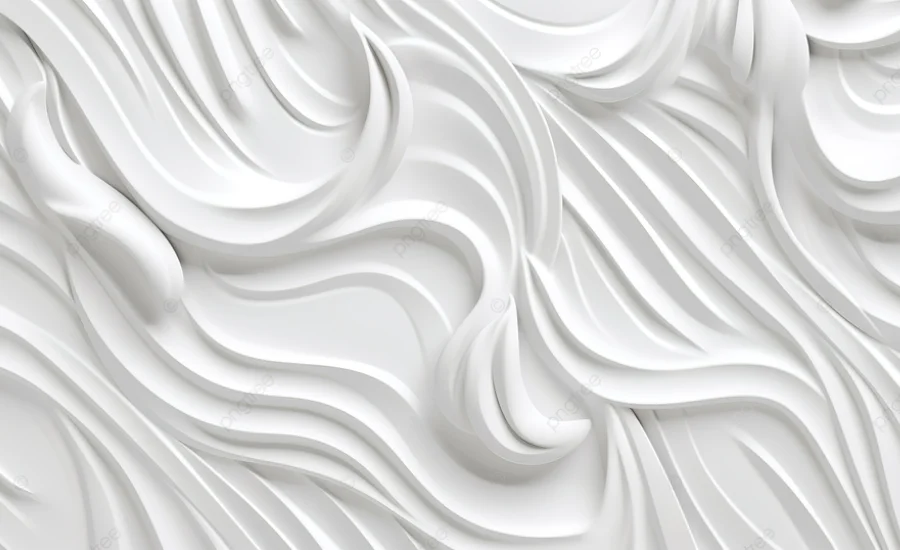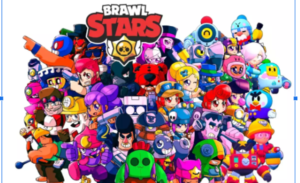Understanding The color:pfulw6wghmw= white: An Briefe Overview

Color is a powerful language that transcends mere visual perception; it speaks directly to our emotions and influences how we navigate our daily lives. White, in particular, is not just a color but a versatile symbol that holds a multitude of meanings and emotional connotations, much like a blank canvas waiting to be filled. It represents a broad spectrum of influences, from purity, peace, and clarity to emptiness, simplicity, and even sterility. White can evoke a sense of calm and order, providing a foundation for new beginnings and fresh perspectives. Throughout history and across different cultures, the color white has been used to represent everything from innocence and spirituality to mourning and humility. Join me as we explore the fascinating world of white, delving into its deep significance, rich history, and the myriad ways it connects with our emotions and shapes our experiences.
Understanding color:pfulw6wghmw= white : A Guide To Consistent Color Reproduction
What Are Color Codes?
Color codes are alphanumeric sequences or values used to define specific colors with precision, ensuring they appear consistently across various digital and print platforms. These codes are essential in fields such as web development, graphic design, digital art, and printing, where maintaining accurate and consistent colors is crucial for visual coherence and brand identity. By using standardized color codes, designers and developers can ensure that the same shade of blue, for example, appears identically on a website, a printed brochure, or a mobile app, regardless of the device or medium.
Different Types Of color:pfulw6wghmw= white And Their Applications

Color Codes Overview
CMYK (Cyan, Magenta, Yellow, Key/Black): A subtractive color model used in printing. It combines cyan, magenta, yellow, and black inks to reproduce colors by subtracting light from a white background. It’s ideal for ensuring accurate color reproduction in print media..
RGB (Red, Green, Blue): An additive color model used in digital screens. Colors are created by combining red, green, and blue light. Full intensity produces white, and zero intensity produces black.
HEX (Hexadecimal): A six-digit code used in web design, represented as #RRGGBB. For example, #FFFFFF is white, and #000000 is black. HEX codes are simple and widely used for digital color specification.
HSL (Hue, Saturation, Lightness): A model describing colors based on hue (type of color), saturation (intensity), and lightness (brightness). It is intuitive and useful for precise color adjustments and gradients.
Why Understanding Color Codes Is Important
Understanding color codes is fundamental for anyone working in visual fields such as graphic design, web development, marketing, and branding. Using the correct color code system ensures that colors are consistent and that visual elements communicate the intended message effectively. This consistency is crucial for maintaining brand identity, creating a cohesive visual experience, and ensuring accessibility standards are met across different platforms.
Whether you are developing a website, designing a logo, or preparing a printed advertisement, mastering these different types of color codes will allow you to produce work that is both visually appealing and consistent across all mediums.
Cultural And Symbolic Significance Of White
The color white carries deep cultural and symbolic meanings that vary widely across different societies and contexts. In many Western cultures, white is traditionally associated with qualities such as purity, innocence, and peace. This symbolism is prominently displayed in weddings, where white dresses are worn to signify a new beginning and the bride’s purity. Similarly, in religious ceremonies, white often represents divine presence and spiritual cleanliness, evoking a sense of sanctity and reverence. This connection to purity and safety is also why white is commonly used in medical settings—such as hospitals, clinics, and pharmaceutical products—where it reinforces a sense of cleanliness, sterility, and reliability.
However, the symbolism of white is not universal and can differ greatly in other parts of the world. In many Eastern cultures, white is closely linked to mourning, loss, and death. For example, in countries like China, Japan, and India, white is traditionally worn at funerals and during periods of mourning to symbolize the soul’s departure from the physical world and the transition to a spiritual realm. This association stems from the belief that white embodies the cycle of life, death, and rebirth, acting as a neutral canvas for both endings and beginnings. The stark contrast between how white is perceived in different cultures highlights the fluidity of color symbolism and underscores how cultural context, historical background, and societal norms profoundly influence the meanings attributed to colors.
White In Art And Design: A Canvas For Creativity
In art and design, white is a powerful tool rather than just a background color. It creates striking contrasts, accentuates other colors, and enhances overall composition. Effective use of white can draw attention, provide balance, and convey themes like purity and serenity.
In interior design, white is valued for its versatility. It can make spaces appear larger and brighter by reflecting light, which is especially useful in smaller rooms. As a key element of minimalist design, white promotes a clean, uncluttered aesthetic and complements various styles.
Psychologically, white is associated with calmness, order, and clarity. It’s commonly used in environments aimed at relaxation and focus, such as offices and spas. White’s adaptability also allows it to create diverse moods and atmospheres when combined with different textures and colors.
Analyzing The Code Snippet: A Closer Look at color:pfulw6wghmw= white

When examining the CSS code snippet color: white, there are several components and potential explanations that require deeper analysis. Let’s break down each part to understand its function and explore the possible reasons behind the unusual identifier present in the code.
Dissecting The Code Elements
- color: The CSS Property
The color property in CSS is a fundamental aspect of web design that specifies the color of the text within a particular HTML element. This property can accept a variety of color values, such as named colors (e.g., white, black, red), HEX codes (e.g., #FFFFFF), RGB values (e.g., rgb(255, 255, 255)), and HSL values (e.g., hsl(0, 0%, 100%)). In this snippet, the color property is set to white, which will render the text in the element with a white color. - pfulw6wghmw: An Unusual or Custom Identifier
The string pfulw6wghmw appears to be an atypical identifier, which is not part of standard CSS syntax or conventions. This random, seemingly nonsensical string could serve several purposes depending on the context in which it is used. It may be a unique or custom identifier within a larger application, potentially part of a proprietary styling system or framework. Such identifiers can be strategically generated to avoid naming conflicts, especially in complex or large-scale projects where multiple developers may be working on the same codebase. - = white: Assigning the Value “White”
The code segment = white appears to be assigning the color value “white” to the color property. In standard CSS, the correct syntax would simply be color: white;. Therefore, the way this snippet is presented suggests that there could be additional context or a specific internal mechanism at play that is not immediately visible from this isolated piece of code.
Possible Explanations For The color:pfulw6wghmw= white Structure
Understanding why this code is written in such a peculiar way requires considering several possibilities. The unique identifier and unusual formatting might be intentional or accidental, each with different implications:
- The identifier
pfulw6wghmwcould be due to several factors: - Proprietary Styling Systems: It might be part of an internal system used in large applications to ensure unique and non-conflicting styles, common in frameworks like React or Angular.
- Minification or Obfuscation: The identifier could result from minification, which compresses code for performance, or obfuscation, which protects code by making it less readable.
- Potential Error: It may be a typo or mistake, as such random strings are unusual in standard CSS.
- Custom Dynamic Styles: It could be used in custom theming solutions where identifiers are generated dynamically based on user preferences or themes.
White In Literature And Symbolism
In literary works, the color white often carries deep symbolic meanings, varying widely depending on the context and the story’s underlying themes. It can signify a spectrum of ideas ranging from innocence and purity to mortality and the mystical.
In Nathaniel Hawthorne’s classic, The Scarlet Letter, white is a recurring motif that represents both purity and the tension between society’s harsh judgments and personal morality. The character Pearl, the daughter of Hester Prynne, is frequently associated with the color white, which symbolizes her innocence. Despite being born from an adulterous relationship, Pearl embodies purity and the conflict between societal condemnation and inherent virtue.
Herman Melville’s Moby-Dick offers a more nuanced and foreboding interpretation of the color white. The white whale, Moby Dick, symbolizes both the awe-inspiring and terrifying aspects of the natural world, embodying themes of the sublime and the unknown. The whale’s whiteness reflects the characters’ deep obsessions, highlighting the futility and arrogance of human attempts to master or fully understand the mysteries of the universe.
In F. Scott Fitzgerald’s The Great Gatsby, white is utilized to illustrate a deceptive facade of innocence and purity. Characters such as Daisy Buchanan frequently appear in white attire, which symbolizes a superficial layer of purity that conceals their moral decay and the hollowness of the American Dream. Here, white represents not just innocence but also the duplicity and illusion that can accompany appearances.
In poetry, white is often used to evoke themes of death and the supernatural. Emily Dickinson, a master of symbolic language, frequently employs white in her poetry to signify the ethereal and the afterlife. In her poem “Because I Could Not Stop for Death,” the “gossamer” gown and “tulle” worn by the speaker symbolize the delicate boundary between life and death, highlighting the transition to the hereafter.
White In Modern Culture And Media
In contemporary culture and media, the color white retains its powerful symbolic resonance, often used to convey a broad spectrum of emotions and thematic elements across film, literature, and popular culture.
White is commonly used to denote purity, innocence, and fresh beginnings. For instance, in Sofia Coppola’s film The Virgin Suicides, white is strategically employed to accentuate the otherworldly beauty and tragic destiny of the central characters. In the Star Wars series, the Jedi Knights are often depicted in white robes, symbolizing their dedication to peace, justice, and moral integrity, which starkly contrasts with the dark garb of the Sith, representing evil and corruption.
White also holds a significant place in science fiction, where it often symbolizes futuristic technology and progress. The sleek, white interiors of spaceships in films like 2001: A Space Odyssey and Interstellar reflect a vision of a sterile, efficient, and highly advanced future. However, the use of white in these settings can also highlight the cold, impersonal nature of technological advancement, prompting reflections on the potential loss of humanity in the relentless pursuit of progress.
In the world of fashion, white remains a symbol of elegance and sophistication. Iconic figures such as Audrey Hepburn and Marilyn Monroe have cemented white garments as timeless symbols of chic style. In haute couture and bridal fashion, white continues to signify purity, grace, and timeless beauty, reinforcing its enduring appeal.
Contemporary art often uses white to challenge conventional perceptions and create visually striking statements. Artists like Robert Ryman and Yayoi Kusama explore themes of minimalism and infinity through the extensive use of white, inviting viewers to engage with the color’s subtle depths and interpretations.
White In Architecture And Urban Design
In architecture and urban design, white is a prominent color, symbolizing modernity, cleanliness, and openness. Its use in buildings and public spaces can dramatically transform environments, creating a sense of brightness and expansiveness.
The modernist movement in architecture, led by pioneers like Le Corbusier and Walter Gropius, embraced white as a cornerstone of their design philosophy. Le Corbusier’s Villa Savoye is an iconic example of modernist architecture, where the white facade represents purity, simplicity, and functionalism. The use of white in modernist architecture emphasizes clean lines, simplicity, and a harmonious balance between form and function.
In urban design, white is often chosen to brighten public spaces and enhance the feeling of openness. White pavements, sculptures, and installations can lighten up cityscapes, making them appear more welcoming and accessible. This use of white reflects a desire for cleanliness and order in urban settings, contributing positively to the psychological well-being of city dwellers.
White also plays a crucial role in sustainable architecture. Reflective white surfaces are commonly used to mitigate the urban heat island effect, which helps to lower temperatures in densely populated areas. The incorporation of white in green building design not only adds to aesthetic appeal but also significantly improves energy efficiency and environmental sustainability.
Understanding White In Digital Media: A Technical Overview

White is a fundamental color in digital media and design, serving as a base and a backdrop that can significantly influence the overall look and feel of a visual composition. To fully grasp its use, it’s important to understand how white is represented across different color models—RGB, HEX, and CMYK.
White in the RGB Color Model
In the RGB (Red, Green, Blue) color model, which is commonly used for digital screens, white is achieved when all three primary colors are displayed at their full intensity. This is represented by the value (255, 255, 255). Each number corresponds to the intensity of red, green, and blue light, respectively. When all three colors are set to their maximum value, they blend together to produce pure white light. This combination is fundamental for digital displays, where mixing light is the key to creating a full spectrum of colors.
Interpreting White in the HEX Code System
The HEX color code system is another method used to define colors in digital design, particularly in web development. In this system, white is represented by the code #FFFFFF. This six-character code is divided into three pairs, each pair representing the intensity of red, green, and blue in hexadecimal format. Just like in the RGB model, the values are at their maximum, which results in the color white. The HEX system is especially useful for web designers and developers because it allows precise control over color selection and consistency across different platforms and devices.
The Role of color:pfulw6wghmw= white in the CMYK Color Model
The CMYK (Cyan, Magenta, Yellow, Key/Black) color model is primarily used in print media. Unlike RGB, which deals with light, CMYK works with ink and subtractive color mixing. In this model, white is represented as (0, 0, 0, 0). This means that no ink is applied to the substrate (like paper), allowing the natural color of the paper, which is typically white, to show through. This absence of ink is what creates the appearance of white in print. Understanding this is crucial for print designers to manage how colors appear when printed and ensure the final product matches their design intentions.
Using Color Theory To Design Engaging Graphics For Your Blog Or Business
Mastering color theory is essential for creating visually captivating graphics that can set your blog or business apart. Knowing how different colors interact can transform simple designs into compelling visuals that attract and retain viewers’ attention.
Complementary colors, which are positioned opposite each other on the color wheel, can produce vivid contrasts. This bold pairing creates a dynamic visual tension, making it ideal for highlighting key elements in your graphics, such as call-to-action buttons or important headlines. For example, using a bright orange button on a blue background instantly grabs attention, guiding viewers to where you want them to focus.
Analogous colors, found side by side on the color wheel, provide a more harmonious and cohesive look. These combinations are perfect for creating a serene and unified aesthetic, making them suitable for backgrounds or thematic elements where a subtle, yet visually pleasing palette is desired. For instance, a combination of soft blues, greens, and purples can create a calming effect that is gentle on the eyes.
The psychological impact of colors is another crucial aspect to consider. Each color evokes specific emotions and responses. For example, blue is often associated with trust, reliability, and calmness, making it a popular choice for corporate designs. In contrast, red is linked to passion, energy, and urgency, often used to stimulate excitement or signify action. Understanding these emotional triggers can help align your graphics with your brand’s message and the emotional response you want to elicit from your audience.
Experimenting with diverse color combinations can lead to innovative and eye-catching designs. A creative approach to color selection not only captures your audience’s attention but also enhances their overall experience, creating a memorable impression of your brand or content.
The Influence Of Color In Fashion: Trends, Statements, And Individual Style

Color is a powerful language in fashion, dictating trends and shaping how we express our individuality. Different hues can evoke a range of emotions, allowing people to communicate their feelings, personality, or style through their clothing choices.
Vibrant colors like red and yellow exude confidence, energy, and a sense of optimism. These bold shades are often prominent in spring and summer collections, symbolizing new beginnings and vitality. On the other hand, deeper tones such as navy blue, emerald green, or burgundy are synonymous with sophistication, elegance, and depth. These colors frequently dominate fall and winter runways, evoking a sense of warmth and luxury.
Personal style is deeply connected to color choices. Some people are drawn to bold, eye-catching palettes that reflect their dynamic personalities and willingness to stand out, while others may prefer a more neutral or muted color scheme for a classic, understated look. Each color choice tells a story, and embracing different hues allows individuals to explore and express various facets of their identity.
Seasonal changes also influence the colors we see in fashion. As the weather warms up, lighter and brighter shades emerge, bringing a fresh, airy feel. In contrast, the colder months often call for richer, darker tones that provide comfort and warmth.
Fashion isn’t just about how clothes fit but also about how colors make you feel—whether that’s empowered, comfortable, or somewhere in between. Finding your unique palette and incorporating it into your wardrobe invites creativity and confidence into everyday dressing.
How To Infuse Color Into Your Daily Life For A Positive Impact
Incorporating color thoughtfully into your daily life can be a powerful way to uplift your environment and mood. Start by evaluating the spaces around you—your home, wardrobe, and workspace. Consider what kind of atmosphere you want to create and select colors that align with those feelings.
For a calm and tranquil atmosphere, think about integrating soft blues or gentle greens into your décor. These colors have a soothing effect and can help create a serene space conducive to relaxation or focused work. For a boost of energy and creativity, introduce vibrant reds, oranges, or yellows through accent pieces like cushions, artwork, or even feature walls. These colors can stimulate the mind and add a lively, invigorating vibe to any room.
When it comes to fashion, don’t be afraid to experiment with bold and unconventional color combinations. Mixing and matching different shades can help you express your personal style and also affect your mood throughout the day. Wearing bright, energetic colors like coral or turquoise can lift your spirits, while softer pastels like blush or lavender can provide a sense of calm.
Don’t overlook the digital realm either. Using well-chosen colors for your online content—such as blog graphics, social media posts, and website design—can strengthen your brand identity and resonate with your audience. Colors should not only be visually appealing but also align with the core values and emotional tone you want to convey. nal living and invites positivity into your surroundings. Embrace this exploration of color—it’s more than just an aesthetic choice; it’s a powerful tool for enhancing emotional well-being and self-expression.
You may also read:Gioi-thieu-kenh-123bpros
FAQs
1. What is the RGB representation of white?
In the RGB color model, white is represented by the values (255, 255, 255), which indicates that the maximum intensity of red, green, and blue light is combined to produce the color white on digital screens.
2. How is white represented in the HEX color code system?
In HEX color codes, white is denoted as #FFFFFF. This code shows that the values for red, green, and blue are all at their maximum, resulting in white.
3. What does white represent in the CMYK color model?
In CMYK, which is used for printing, white is represented as (0, 0, 0, 0). This means no cyan, magenta, yellow, or black ink is used, allowing the white background of the paper to be visible.
4. Why is understanding color models important in design?
Understanding color models like RGB, HEX, and CMYK is crucial because they define how colors are represented on different media—digital screens or print. This knowledge ensures that colors appear consistent and true to the designer’s vision across various platforms.
5. Can white appear differently in digital and print formats?
Yes, white can look different depending on the medium. On digital screens, white is created using light (RGB), while in print, it relies on the absence of ink (CMYK). The quality of the screen or the paper also affects the appearance of white.
Conclusion
Understanding how white is represented across different color models—RGB for digital screens, HEX for web design, and CMYK for print—is essential for designers, developers, and anyone involved in visual media. White serves as a foundation in design, offering a neutral base that can either enhance or contrast with other colors. By grasping the nuances of how white is rendered in each model, creatives can ensure consistency, clarity, and impact in their projects, whether they are developing a website, creating digital art, or preparing print materials. Mastery of color theory and these technical details enables more effective communication and visual storytelling.
Stay in touch with us for more updates and alerts! Discoverfuns








